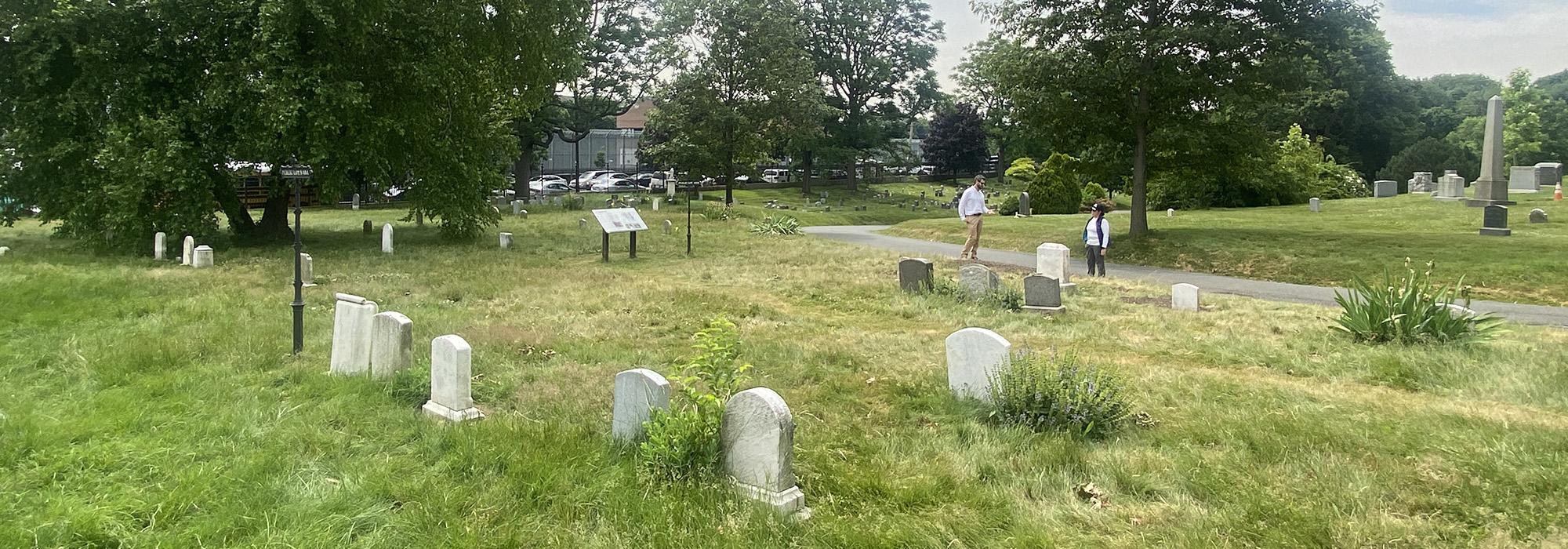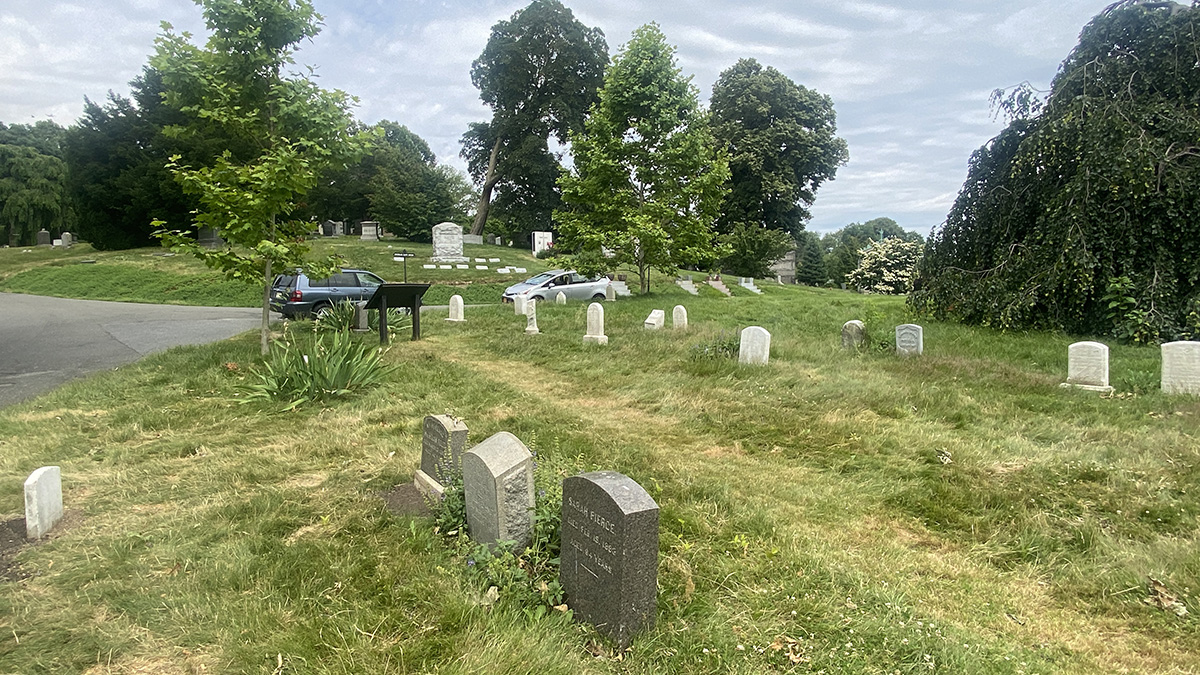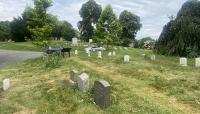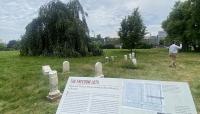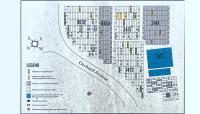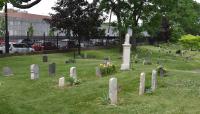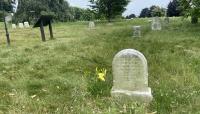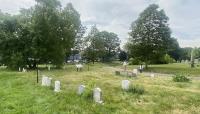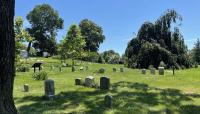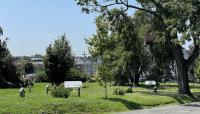Situated along the southwestern edge of The Green-Wood Cemetery, seven burial lots hold the remains of more than 1,300 African Americans. Among the more affordable “public lots” at Green-Wood, these lots became a viable option for many New Yorkers at a time when deeply rooted racism made economic prosperity and the more expensive private lots out of reach for most African Americans. Established in 1840 and originally called the “Colored Lots,” they are sited on a narrow parcel of less than one acre. Ornamental cast-iron fencing along the cemetery’s perimeter allows views from street and sidewalk. From the Fort Hamilton Parkway Entrance, located at Vine Avenue on the cemetery’s southeastern edge, the lots may be approached via Border Avenue, which curves along the cemetery’s southern edge before terminating at Summit and Vale Avenues just north of these burial lots.
As in all public lots in Green-Wood, burial markers were usually small and installed without foundations, if they were ever placed at all. Gradually over years, many of these monuments sunk into the earth and became completely hidden from view. In 2017, The Green-Wood Cemetery worked with high school interns to document and restore portions of the seven lots and unearth twelve of the sunken burial markers. Amid the lots, which differ in shape and size, are scattered trees, including a large weeping European beech, a mature river birch, and several smaller deciduous trees.
Within The Freedom Lots, four lots were designated for the burial of adults and three for children. One lot was purchased in 1849 by the Association for the Benefit of Colored Orphans, which operated The Colored Orphan Asylum in midtown Manhattan.
Notable burials include John Munroe, a Quartermaster Sergeant who served in the Union Army’s 35th Regiment and two men (Samuel Mann and Andrew Schofield) who are believed to have served in white regiments during the Civil War. A pair of contemporary signs make visible the history and recent project work of The Freedom Lots.



